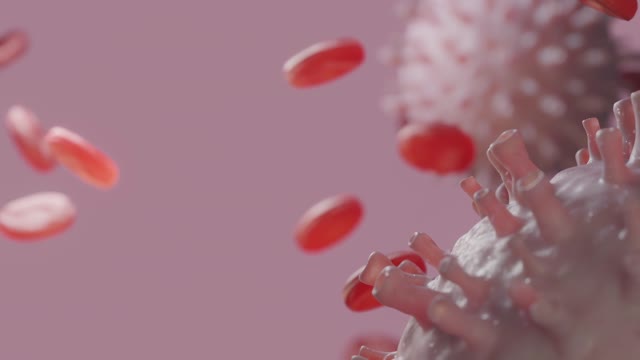Premium Only Content

How virus-infected body cells 3d animation
To understand how a virus works, it is necessary to think on very small scales. At a so small scale that the human eye could never see the movements of a virus. In fact, viruses are tiny microbes on the planet, yet they can make a person sick and even kill.
Then, the questions are: How can something so small make a person so sick? How does a virus reproduce inside the body until it infects another person? Can we avoid getting sick in the presence of a virus?
They are more common than you think
The first thing you should know about viruses is that they are small pieces of RNA (ribonucleic acid) or DNA (deoxyribonucleic acid), wrapped up in a layer of proteins, which protect their genetic material. This means that they cannot replicate on their own, so they need a host cell to be able to live.
They come in very different shapes: as rods, rounds, with crowns or cylindrical tails. However, it is not possible to see this with a simple microscope. To see a virus, it is necessary to use a scanning electron microscope, which uses electrons instead of light to produce an image.
Another important fact is that there are many types of viruses. Some can just cause a common flu, while others can be more harmful such as HIV, Ebola or Coronavirus. And, there are viruses that enter the human body, but the immune system manages to fight them, so the person does not get sick.
In short, viruses can replicate and create other viruses. This is possible as they can adapt very easily to any environment and any host. They are made to survive very difficult conditions.
How do they enter the body?
Usually these microorganisms enter the body through the mouth, eyes, nose, genitals or through wounds, bites or any open wounds. Moreover, they are transmitted through different routes.
Some diseases are spread by direct contact with infected skin, mucous membranes or body fluids. There is also the possibility of indirect contact, when a person touches an object (door, handle, table), which has the virus on it, when an infected person sneezes, coughs or talks or when the mucous membrane comes into contact with another person.
In some other cases, the virus is transmitted through common vehicle such as contaminated food, water or blood. Finally, there are vectors: rats, snakes, mosquitoes etc., which transmit the virus to humans.
-
 0:35
0:35
Rajbanshi
3 years ago3d animation
21 -
 LIVE
LIVE
Donut Operator
4 hours agoI'M BACK/ CRIME/ GAMEBOY CAMERA CHAD
745 watching -
 LIVE
LIVE
RalliedLIVE
2 hours ago $1.72 earnedSPECIALIST ADDICTED MAN WINS WARZONE SOLOS
247 watching -
 1:11:41
1:11:41
Sean Unpaved
2 hours agoBat Flips to Boardrooms: Jets QB Crossroads, Presidential Visits, & RedZone's TV Takeover
21.1K -
 LIVE
LIVE
SportsPicks
3 hours agoCrick's Corner: Episode 51
35 watching -
 1:00:45
1:00:45
Russell Brand
4 hours agoUK Migration Clashes ERUPT! Starmer Sweats as ‘SUMMER OF RIOTS’ Begins? - SF620
116K35 -
 16:51
16:51
IsaacButterfield
10 hours agoYou Are Being Watched
9014 -
 15:22
15:22
The Gun Collective
16 hours agoHateful Bigots TRIED to RUIN my GUN EVENT!
6026 -
 34:11
34:11
The Boomer Effect
23 hours agoAI vs. Jobs: Innovation's Greatest Dilemma
10 -
 1:06:18
1:06:18
Timcast
3 hours agoDOJ Launches STRIKE FORCE To Investigate Obama Over TREASON Claims
153K90